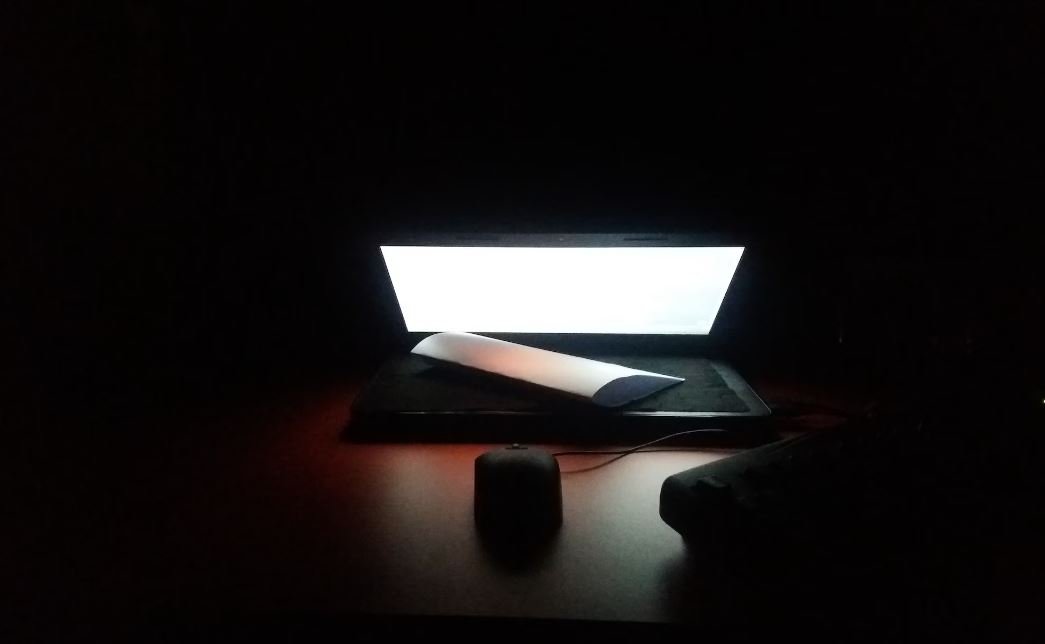Which AI Models Can Generate Images from Text
The field of artificial intelligence has made significant advancements in recent years, particularly in natural language processing and computer vision. One intriguing area of research is the development of AI models that can generate images from textual descriptions. These models have the potential to revolutionize various industries, including advertising, entertainment, and design.
Key Takeaways:
- AI models can generate images from text, opening up new possibilities in advertising, entertainment, and design.
- Several AI models, such as AttnGAN, StackGAN, and DALL-E, have shown promising results in generating realistic images from textual descriptions.
- These models utilize techniques like attention mechanisms, conditional GANs, and transformers to understand and reproduce textual descriptions as images.
The Advancements in AI Image Generation Models
In recent years, researchers have made remarkable progress in developing AI models capable of generating images from textual descriptions. One significant breakthrough came with the introduction of the **AttnGAN** model. AttnGAN stands for Attention Generative Adversarial Network and combines the power of generative adversarial networks (GANs) with attention mechanisms. This allows the model to focus on different parts of the image while generating it, resulting in more detailed and coherent outputs.
Another noteworthy model is **StackGAN**, which takes image generation a step further by introducing a two-stage process. In the first stage, StackGAN generates a low-resolution image based on the textual input. The second stage then refines the low-resolution image, producing a high-quality and more realistic final output. This multi-stage approach improves the overall image quality and fidelity. *StackGAN has demonstrated impressive results in creating images from textual descriptions.*
Understanding DALL-E: Where Art Meets AI
One of the most fascinating developments in the field of AI image generation is **DALL-E**. Created by OpenAI, DALL-E is a machine learning model that can generate images from textual prompts. What sets DALL-E apart is its ability to generate highly complex and imaginative images based on *obscure or abstract descriptions*. DALL-E has been trained on a vast dataset of images and can generate novel visual concepts that have never been seen before.
Unlike other models, DALL-E operates at the intersection of art and AI, offering a glimpse into the creative potential of machine learning algorithms. With DALL-E, the boundaries of image generation are further pushed, allowing for surreal and fantastical visual outputs based on nothing more than a few lines of text.
Models Comparison: AttnGAN vs. StackGAN vs. DALL-E
| Model | Advantages | Limitations |
|---|---|---|
| AttnGAN |
|
|
| StackGAN |
|
|
| DALL-E |
|
|
The Future of Image Generation from Text
The progress made in AI image generation models is undeniably impressive, but these models are far from perfect. While they can generate remarkably realistic and imaginative images, they still face limitations and challenges. Furthermore, ethical concerns surrounding the potential misuse or misinformation of generated images need to be addressed.
However, as technology continues to advance, researchers will likely overcome these challenges, leading to even more sophisticated and capable AI models. The future holds immense potential for image generation from text, with applications ranging from virtual reality to content creation. The creative possibilities are endless, and we can expect AI models to play an increasingly prominent role in various industries.

Common Misconceptions
Misconception 1: All AI models can generate images from text
One common misconception is that all AI models are capable of generating images from text. While there are AI models that have been trained to generate images based on textual descriptions, not all AI models possess this capability.
- Not all AI models are designed for image generation
- AI models that can generate images from text require extensive training
- The availability of pre-trained image generation models is limited
Misconception 2: AI-generated images are always perfect representations
Another misconception is that AI-generated images are always perfect representations of the intended description. While AI models have made significant advancements in generating realistic images, there are still limitations and potential inaccuracies in the results.
- AI-generated images may lack certain details or exhibit distortions
- Complex or ambiguous textual descriptions can lead to less accurate image generation
- AI-generated images may unintentionally introduce biases or stereotypes
Misconception 3: AI-generated images are completely original
Some people believe that AI-generated images are entirely original and created from scratch. However, many AI models use existing image datasets as references and rely on previous examples to generate new images.
- AI models often use pre-existing datasets as their training data
- Generated images can resemble or combine features from existing images
- Image generation models rely on learned patterns and correlations
Misconception 4: AI-generated images are indistinguishable from real photographs
While AI-generated images have made remarkable progress, it is not accurate to claim that they are indistinguishable from real photographs. Although AI models can create visually convincing images, certain telltale signs can often reveal that an image has been generated by AI.
- If examined closely, some details may appear unnatural or unrealistic
- AI-generated images may lack imperfections or random variations present in real photographs
- Sophisticated editing tools can help discern AI-generated images from real ones
Misconception 5: AI-generated images are always copyright-free
There is a misconception that AI-generated images are automatically copyright-free. However, the ownership and rights to AI-generated images can vary depending on different factors, such as the dataset used for training or the specific AI model.
- Certain datasets used in AI training can have copyright restrictions
- Intellectual property rights may apply to AI-generated images
- Legal considerations regarding ownership and rights are still being debated

Introduction
AI models that can generate images from text have been making significant advancements in recent years. These models use natural language processing techniques to interpret textual descriptions and convert them into visual representations. In this article, we present ten captivating examples showcasing the capabilities of various AI models in generating images from text.
1. Dreamy Landscapes
Imaginative AI algorithms can transform written descriptions into stunning and dreamy landscapes, complete with vibrant colors, rolling hills, and picturesque sunsets.
| Text Description | Generated Image |
|---|---|
| A tranquil lake surrounded by lush green meadows, with snow-capped mountains in the distance. | Image of a serene lake encompassed by vibrant greenery, framed by majestic snow-capped peaks. |
| A mystical forest filled with glowing mushrooms and ethereal light filtering through the canopy. | Vivid representation of an enchanting woodland, with luminescent mushrooms and an otherworldly atmosphere. |
2. Futuristic Cityscapes
Artificial intelligence models can envisage futuristic cityscapes that blend imaginative architecture, advanced technologies, and bustling urban life.
| Text Description | Generated Image |
|---|---|
| A towering metropolis adorned with neon lights, flying cars, and holographic billboards. | A mesmerizing visual depiction of a futuristic city, characterized by sprawling skyscrapers and vibrant neon-lit streets. |
| A cityscape with transparent buildings and transport tubes crisscrossing the sky. | An awe-inspiring depiction of a city with buildings made of glass and an intricate network of futuristic transport tubes. |
3. Mythical Creatures
Using textual prompts, AI models can bring mythical creatures to life, utilizing intricate details and vivid depictions from folklore and fantasy.
| Text Description | Generated Image |
|---|---|
| A majestic dragon with shimmering silver scales, fiery eyes, and iridescent wings. | An impressive representation of a fearsome dragon, adorned with glistening silver scales and a fiery gaze, wings aglow with myriad colors. |
| A graceful unicorn with a pearl-white coat, a golden horn, and a flowing rainbow-colored mane. | A captivating image of a mythical unicorn, characterized by its pristine white coat, a radiant golden horn, and a multicolored cascading mane. |
4. Retro-Inspired Artwork
AI models can recreate the nostalgia of the past by generating art pieces in vintage or retro styles, evoking memories and emotions.
| Text Description | Generated Image |
|---|---|
| A retro-inspired poster for a fictitious 1950s sci-fi movie, featuring a rocket ship and otherworldly creatures. | An evocative poster with a vintage aesthetic, reminiscent of 1950s science-fiction, capturing the essence of an otherworldly adventure. |
| A vibrant album cover with psychedelic patterns and bold typography for a 1970s-style rock band. | A visually striking album cover, embracing the vibrant and psychedelic design elements of 1970s rock music. |
5. Surreal Artistic Creations
AI models excel at creating imaginative and surreal art pieces, pushing the boundaries of reality and capturing the essence of abstract concepts.
| Text Description | Generated Image |
|---|---|
| An abstract representation of chaos and order colliding, with swirling shapes and contrasting colors intertwining. | A visually captivating image where chaotic and ordered elements converge, blending swirling shapes and harmonious yet contrasting hues. |
| A dreamlike landscape with floating islands, waterfalls defying gravity, and ethereal creatures roaming. | A surreal depiction of a dreamscape, featuring levitating islands, gravity-defying waterfalls, and ethereal beings wandering freely. |
6. Marvelous Architectural Designs
AI algorithms can understand architectural concepts and conceive striking designs, pushing the boundaries of innovation and aesthetics.
| Text Description | Generated Image |
|---|---|
| An unconventional building with a twisted facade, resembling a giant, coiled serpent. | A visionary architectural design featuring a structure with a twisted facade, echoing the mesmerizing form of a giant, coiled serpent. |
| A sustainable skyscraper covered in lush gardens, featuring cascading waterfalls and vertical farms. | An awe-inspiring vision of a sustainable high-rise building, adorned with verdant gardens, cascading waterfalls, and innovative vertical farms. |
7. Intergalactic Exploration
AI models can create spellbinding images of the cosmos, allowing us to explore and visualize distant galaxies and celestial phenomena.
| Text Description | Generated Image |
|---|---|
| A panoramic view of a nebula, with swirling cosmic clouds and vibrant colors. | A mesmerizing visual interpretation of a nebula, presenting swirling celestial clouds adorned with a captivating array of vibrant hues. |
| An artist’s depiction of an exoplanet covered in dense vegetation, with vibrant alien flora and fascinating wildlife. | A stunningly vivid portrayal of an exoplanet teeming with lush vegetation, exhibiting an extraordinary and diverse array of alien flora and fauna. |
8. Culinary Delights
AI models possess the ability to generate enticing and delectable images of food, tantalizing our senses and inspiring appetite.
| Text Description | Generated Image |
|---|---|
| A mouthwatering dessert plate with a decadent chocolate cake, drizzled with raspberry sauce and adorned with fresh berries. | An exquisite portrayal of a dessert plate, featuring a rich and indulgent chocolate cake elegantly adorned with a delightful raspberry sauce and luscious fresh berries. |
| A gourmet burger with a perfectly seared Wagyu beef patty, topped with melted Gruyère cheese and caramelized onions. | A visually enticing image of a gourmet burger, showcasing a flawlessly seared Wagyu beef patty tantalizingly layered with melted Gruyère cheese and delicious caramelized onions. |
9. Fashion Forward
AI models have the ability to envision innovative and captivating fashion designs, setting trends and pushing the boundaries of style.
| Text Description | Generated Image |
|---|---|
| An avant-garde evening gown adorned with intricate lace patterns, featuring a voluminous skirt and sheer bodice. | An extraordinary evening gown epitomizing avant-garde fashion, showcasing intricate lace motifs, a voluminous skirt, and a daring sheer bodice. |
| A futuristic unisex outfit with metallic textures, angular cuts, and vibrant LED lights embedded in the fabric. | An imaginative and edgy unisex ensemble exuding futuristic vibes, characterized by metallic textures, angular silhouettes, and vibrant LED lights seamlessly integrated into the fabric. |
10. Captivating Wildlife
AI models can depict mesmerizing wildlife scenes, immortalizing the beauty and diversity of earth’s flora and fauna.
| Text Description | Generated Image |
|---|---|
| An awe-inspiring image of a pride of lions resting under the shade of an Acacia tree in the African savannah. | A breathtaking snapshot capturing a serene moment in the African savannah, featuring a majestic pride of lions seeking respite under the canopy of an Acacia tree. |
| A vibrant underwater scene with mesmerizing coral reefs, colorful tropical fish, and a graceful sea turtle gliding by. | An enchanting depiction of an underwater paradise, showcasing vibrant coral reefs teeming with radiant tropical fish and a graceful sea turtle gliding effortlessly through the crystal-clear waters. |
Conclusion
The remarkable advancements in AI technology have empowered models to generate captivating images from textual descriptions. These models excel at producing landscapes, cityscapes, mythical creatures, retro art, surreal artwork, architectural designs, cosmic phenomena, culinary delights, fashion designs, and wildlife scenes. The ability of AI models to translate text into visual representations opens up a world of possibilities in various creative domains, showcasing the limitless potential of artificial intelligence.
Frequently Asked Questions
Which AI Models Can Generate Images from Text?
1. How do AI models generate images from text?
AI models use a combination of natural language processing and computer vision techniques to understand the textual description and convert it into visual representations. These models learn from a large dataset of images and their corresponding textual descriptions.
2. Can you provide some examples of AI models that generate images from text?
Some popular AI models used for generating images from text include DALL-E, CLIP, and AttnGAN. These models have been trained on vast amounts of text-image pairs and can produce realistic visual outputs based on textual input.
3. Are there any limitations to AI models when generating images from text?
Yes, AI models may not always accurately interpret and generate images based on textual descriptions. They may struggle with ambiguous or complex instructions. Additionally, the generated images may not always match the exact expectations of the user.
4. How do AI models ensure the generated images align with the text?
AI models utilize techniques like attention mechanisms and Transformers to align the generated images with the given textual descriptions. These mechanisms help the models focus on relevant information and generate images accordingly.
5. Can AI models learn to generate images from any type of text?
AI models require training data that contains both textual descriptions and corresponding images. The models can learn to generate images from similar type of text for which they have been trained. However, generalizing to completely new or unrelated textual descriptions may not be efficient.
6. How can AI models be used practically for image generation?
The practical applications of AI models that generate images from text are vast. They can be employed in fields such as graphic design, virtual reality, gaming, and content creation. These models can automate the process of generating visuals based on textual input.
7. Are there any ethical considerations when using AI models for image generation?
Yes, there are ethical considerations associated with AI models. They can potentially generate inappropriate or biased images based on the textual descriptions they are trained on. There is a need for careful curation of training data and post-generation evaluation to address such issues.
8. How can AI models that generate images from text benefit businesses?
Businesses can leverage AI models for various purposes, such as generating product visuals, creating marketing materials, and designing prototypes. These models can enhance productivity, creativity, and assist in creating compelling visual content.
9. What technologies are involved in developing AI models for image generation?
The development of AI models for image generation involves technologies like deep learning, convolutional neural networks (CNNs), recurrent neural networks (RNNs), natural language processing (NLP), and computer vision. These technologies work together to enable the effective generation of images from text.
10. Can AI models that generate images from text be improved in the future?
Yes, AI models are subject to continuous advancements and improvements. Researchers and developers are constantly working on enhancing the capabilities of these models through techniques like transfer learning, dataset augmentation, and incorporating user feedback.




